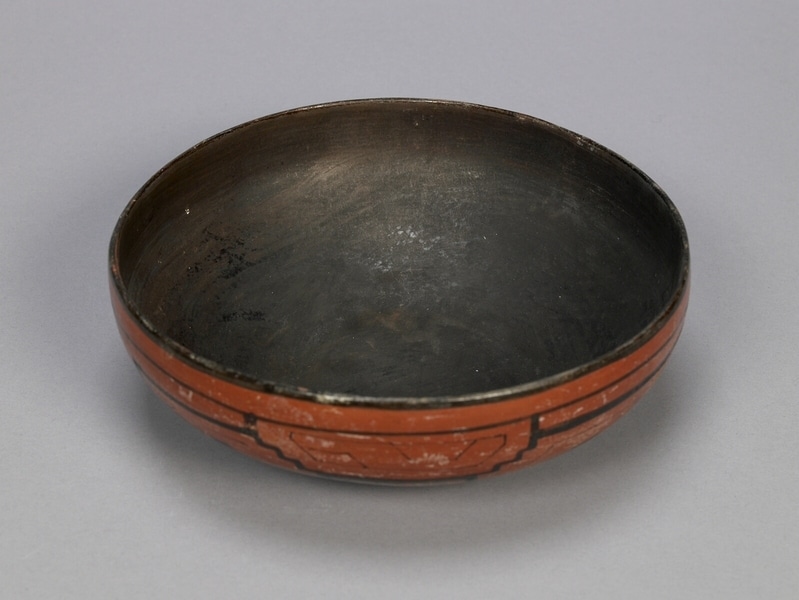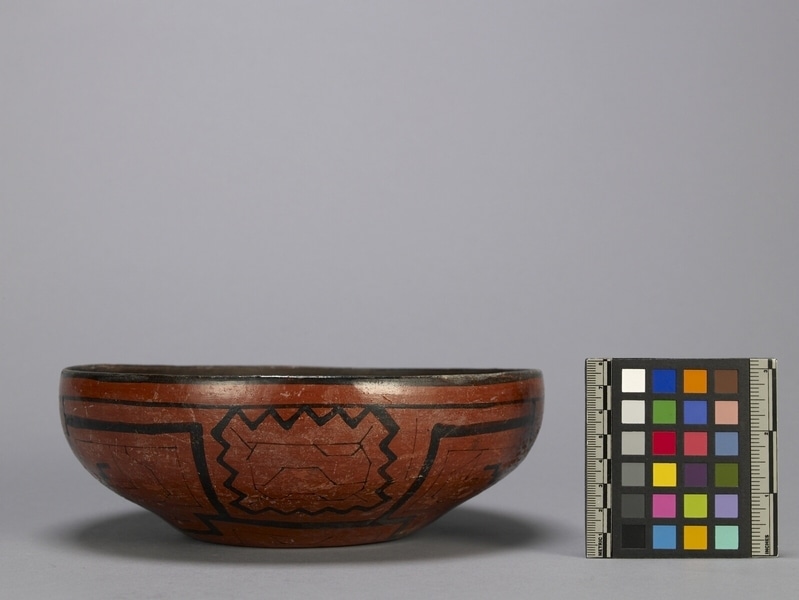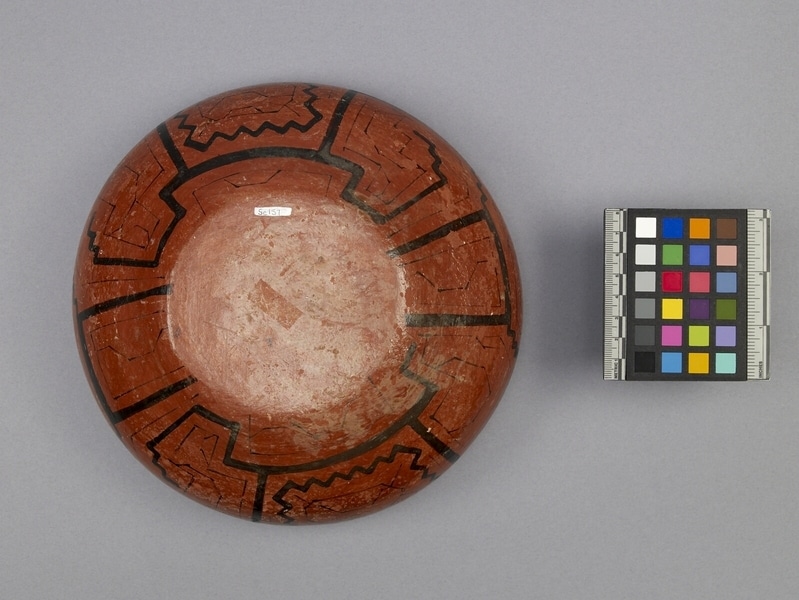Bowl Item Number: Se157 from the MOA: University of British Columbia




Description
Round, polycrome bowl which constricts steeply in lower third to 10cm. Flat base. Matte black inside, orange with black lines define space in open ended rectangles, zigzag edged rectangles, step-edges rectangles and line ends, etc. Between thick lines are thin ones which run parallel and diverge from thicker ones. Resin-like coating has discoloured to yellow on base, bubbled and chipped on sides. Small hole on inside, not through. Some accretions inside.
History Of Use
Shipibo pottery derives from an artistic tradition which appears to be indigenous to the Amazon Basin (Willey) reaching its fullest development among the Panoan speakers of the upper Amazon, such as the Shipibo. The geometric designs found on this pottery are also found on wooden objects such as paddles, textiles, and used for body decoration. According to Salas, these patterns derive from a cross and serpent theme. Characteristically, designs are formed by heavy and fine red and black lines on cream. Traditionally, uses ranged from pots for boiling meat and fish, bowls for eating, Chicha vessels for storing beer and effigy vessels for female puberty rites. The expansion into the art or tourist market is evidenced by the establishment of a pottery school, and individual recognition of a few potters for their skill (Salas).
Cultural Context
pottery; tourist art
Item History
- Made in Peru before 1980
- Collected before 1980
- Owned by A. C. Wylie and Tom A. Wylie before December 22, 1980
- Received from Museum of Anthropology Shop Volunteers (Funding source), A. C. Wylie (Seller) and Tom A. Wylie (Seller) on December 22, 1980
What
Who
- Culture
- Shipibo
- Previous Owner
- A. C. Wylie and Tom A. Wylie
- Received from
- Museum of Anthropology Shop Volunteers (Funding source), A. C. Wylie (Seller) and Tom A. Wylie (Seller)
Where
- Holding Institution
- MOA: University of British Columbia
- Made in
- Peru
When
- Creation Date
- before 1980
- Collection Date
- before 1980
- Ownership Date
- before December 22, 1980
- Acquisition Date
- on December 22, 1980
Other
- Item Classes
- ceramics
- Condition
- good
- Current Location
- Case 94
- Accession Number
- 0695/0003